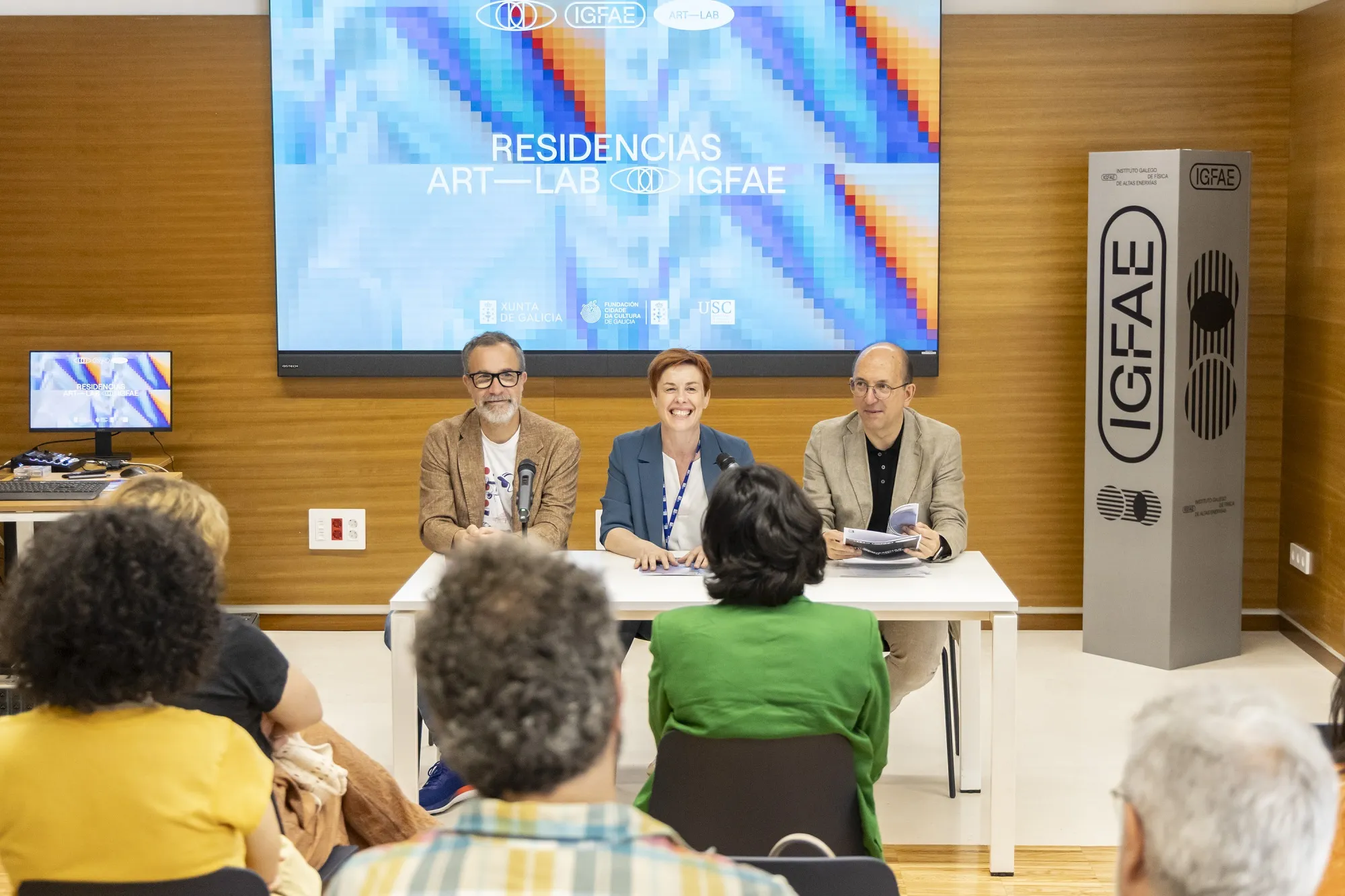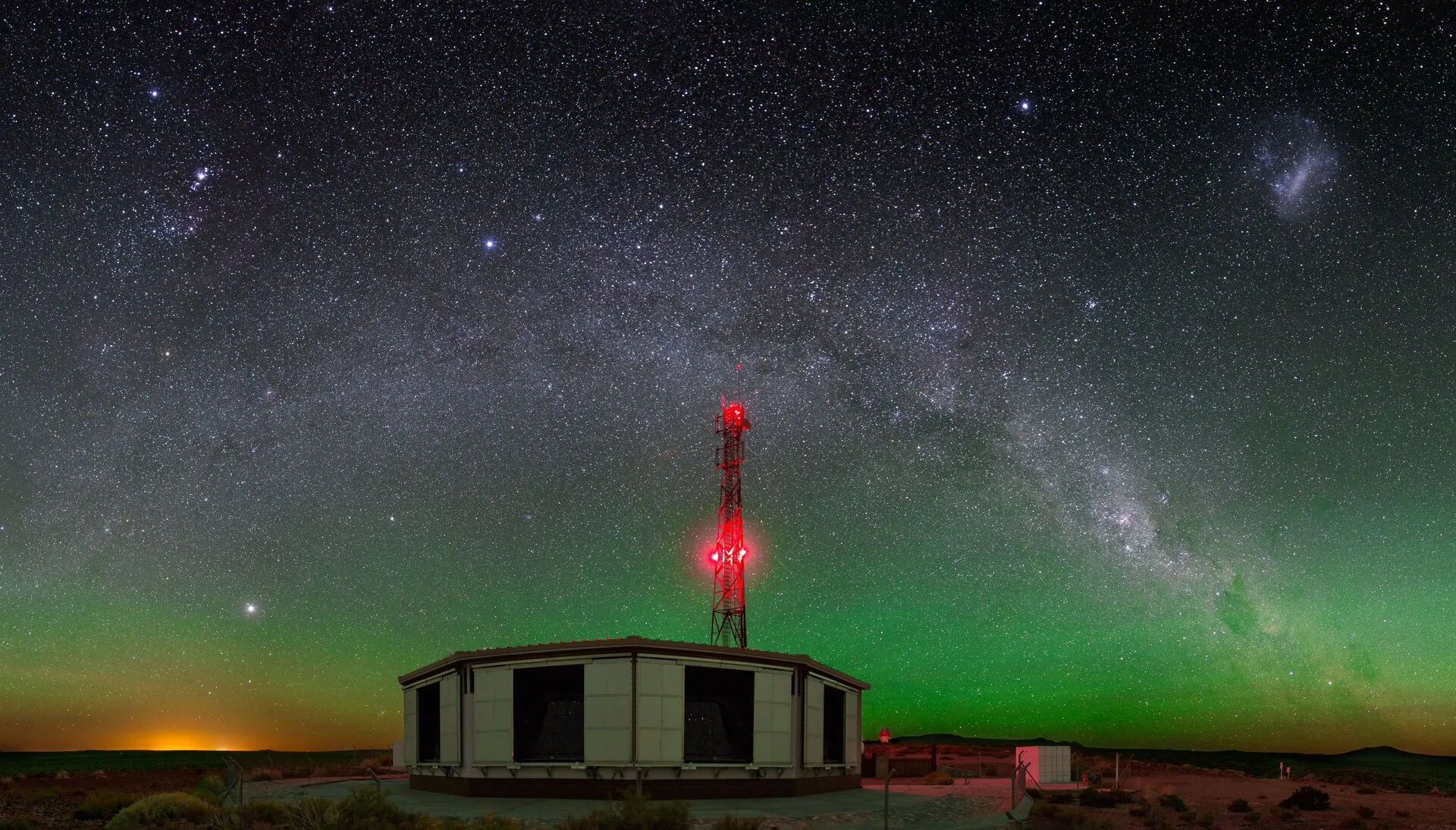Investigadores do Instituto Galego de Física de Altas Enerxías (IGFAE) da USC desenvolven e instalan un detector de raios cósmicos no observatorio ORCA da base científica “Juan Carlos I”, na Isla Livingston da Antártida. Este dispositivo, xa en funcionamento, medirá con precisión electróns e muóns para estudar a actividade solar e as condicións da atmosfera terrestre.
Avanzouse moito na comprensión da orixe e natureza dos raios cósmicos desde que o físico austriaco Victor Hess os descubrise en 1912 empregando un globo aerostático a 5.300 m de altura. Sabemos que case todas estas partículas son núcleos de hidróxeno e de todos os elementos da táboa periódica, ainda que as causas polas que adquiren enerxías moi superiores ás conseguidas polos aceleradores máis potentes non son do todo coñecidas. O mesmo ocorre á hora de determinar a súa orixe; é practicamente imposible, salvo para as partículas de enerxías máis altas. Tamén hai raios cósmicos de baixa enerxía provintes do Sol, que compoñen o coñecido vento solar. A súa intensidade crece coa actividade solar e os seus efectos sobre os sistemas de comunicacións e de posicionamento global como o GPS e outros dispositivos electrónicos en forma de tormenta magnética poden ser desastrosos. Por iso é fundamental mellorar as técnicas de detección temperá dos devanditos eventos para previr no posible o seu impacto.
Con este propósito, un equipo do Instituto Galego de Física de Altas Enerxías (IGFAE) da Universidade de Santiago (USC) desenvolveu un detector de raios cósmicos que foi finalmente instalado na base científica “Juan Carlos I”, situada na Isla Livingston da Antártida. Despois do seu traslado no Buque de Investigacións Oceanográficas “Hespérides”, o equipo finalizou a posta en marcha de TRISTAN o pasado mes de decembro como parte do Observatorio Antártico de Raios Cósmicos (ORCA), onde recompilará datos ata a chegada do verán austral en marzo. Con eles, analizarase a actividade solar e estudarase o efecto do campo magnético terrestre sobre a propagación dos raios cósmicos.
Medicións desde o continente xeado
A expedición á Antártida comezou a principios de novembro do 2019 cando o investigador do IGFAE e profesor da USC, Juan A. Garzón, e o estudante de doutoramento, Damián García Castro, partiron a Cartaxena para a montaxe do detector TRISTAN a bordo do “Hespérides”. O Prof. Garzón acompañou ao detector durante todo o traxecto con obxecto de supervisar o seu funcionamento. Ao longo do mesmo, TRISTAN tomou datos dunha rexión particularmente interesante onde o escudo magnético terrestre é lixeiramente máis débil e que aínda non foi estudada con detalle a nivel de superficie terrestre: a denominada Anomalía Magnética do Atlántico Sur.
Unha vez na Isla Livingston, despois de acondicionar a base “Juan Carlos I” para o seu uso polo persoal investigador, o detector TRISTAN foi posto en funcionamento a última semana de decembro no observatorio ORCA, xunto con outros dous detectores desenvolvidos pola Universidade de Alcalá (UAH), centro coordinador do proxecto.
TRISTAN (TRasgo para InveSTigaciones ANtárticas) é un detector tipo TRASGO coa principal característica de identificar muóns e electróns, partículas secundarias orixinadas pola interacción dos raios cósmicos coa atmosfera terrestre, mediante un análise software. Tamén é capaz de determinar o tempo de chegada, cunha precisión superior ao nanosegundo ‒unha milmillonésima de segundo‒ e a dirección de incidencia de ata unhas 20 partículas producidas nunha mesma interacción; dese xeito poderíase acceder de forma indirecta a algunhas das propiedades, dirección e enerxía do raio cósmico primario.
Datos complementarios desde Santiago
No ano 2014, no laboratorio LabCAF da Facultade de Física da USC instalouse para a toma de datos outro detector tipo TRASGO, pero de maiores prestacións: TRAGALDABAS (Trasgo for the AnaLysis of the nuclear matter Decay, the Atmosphere, the earth B- Field And the Solar activity). “A análise conxunta dos datos tomados de forma simultánea por ambos os detectores, dada a súa capacidade direccional e a gran distancia entre eles ‒ao redor de 13.000 km‒ ofrece unha oportunidade única para mellorar significativamente os resultados que cada un dos detectores pode ofrecer por separado, en particular os relativos á posible detección temperá de tormentas magnéticas”, explica o investigador do IGFAE. As medicións con ambos dispositivos estudaranse xunto coas observacións de URAGAN ‒detector de muóns situado no Instituto MEPhI, en Moscova‒ para correlacionar tódolos datos. No desenvolvemento de TRISTAN tamén colaboraron de forma moi activa o Laboratorio de Instrumentación e Física Experimental de Partículas (LIP) de Coimbra, onde foi construio o detector, e a empresa Hidronav Technologies, de Vigo, que redeseñou e mellorou parte da electrónica utilizada.






